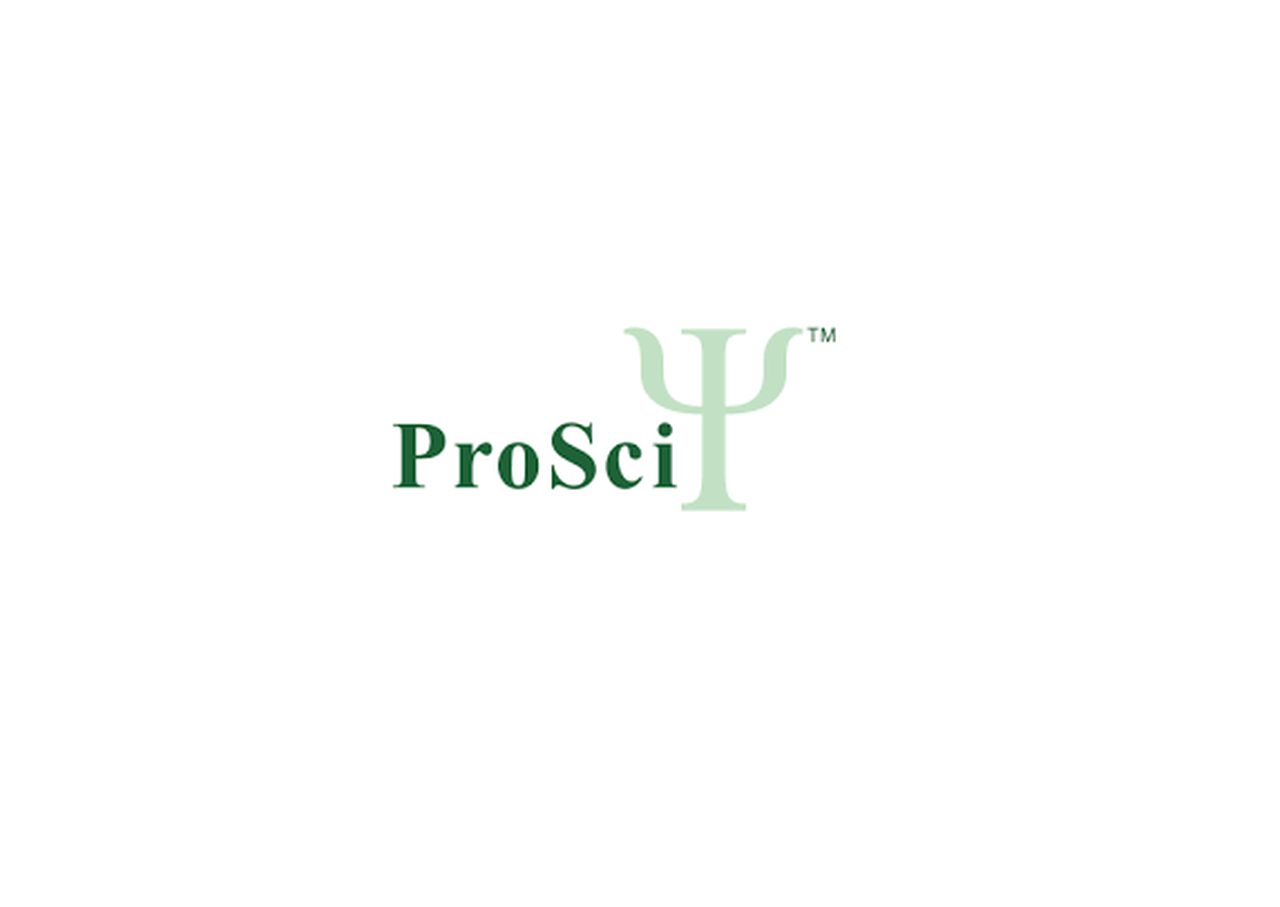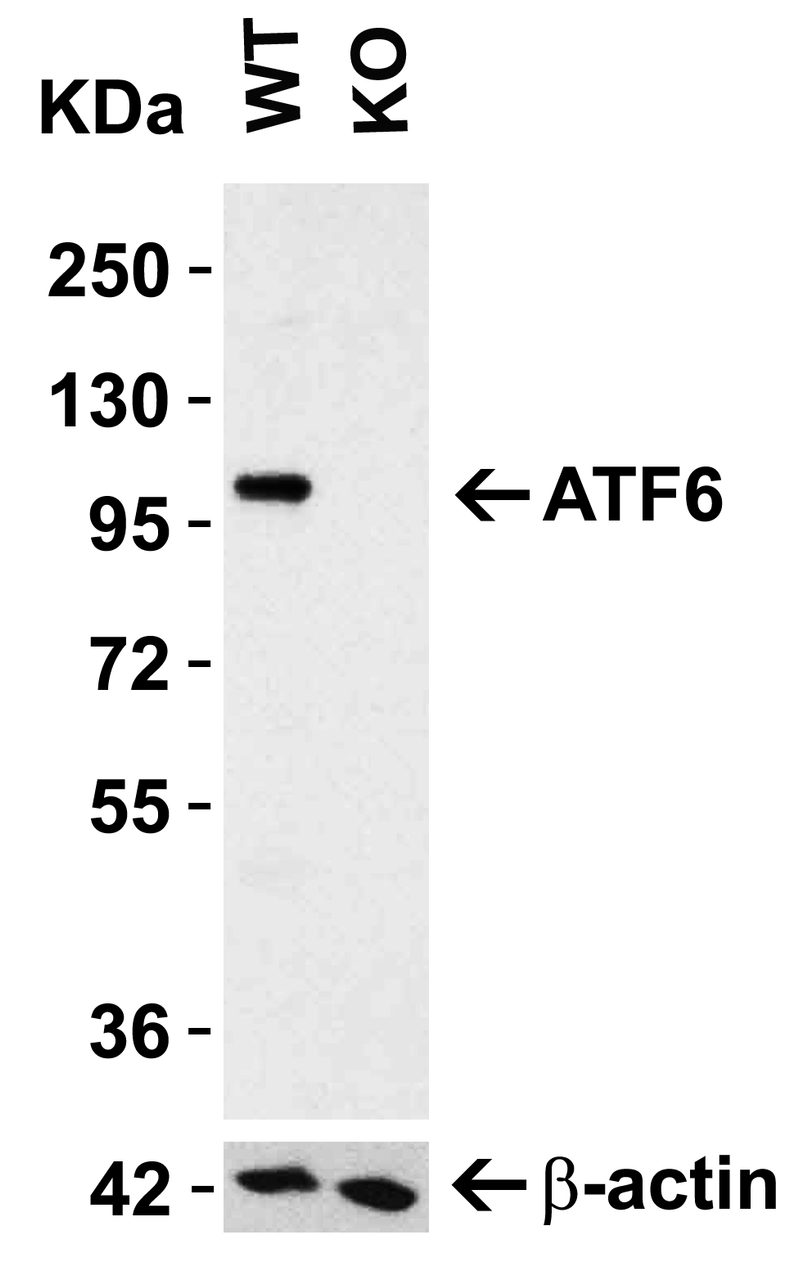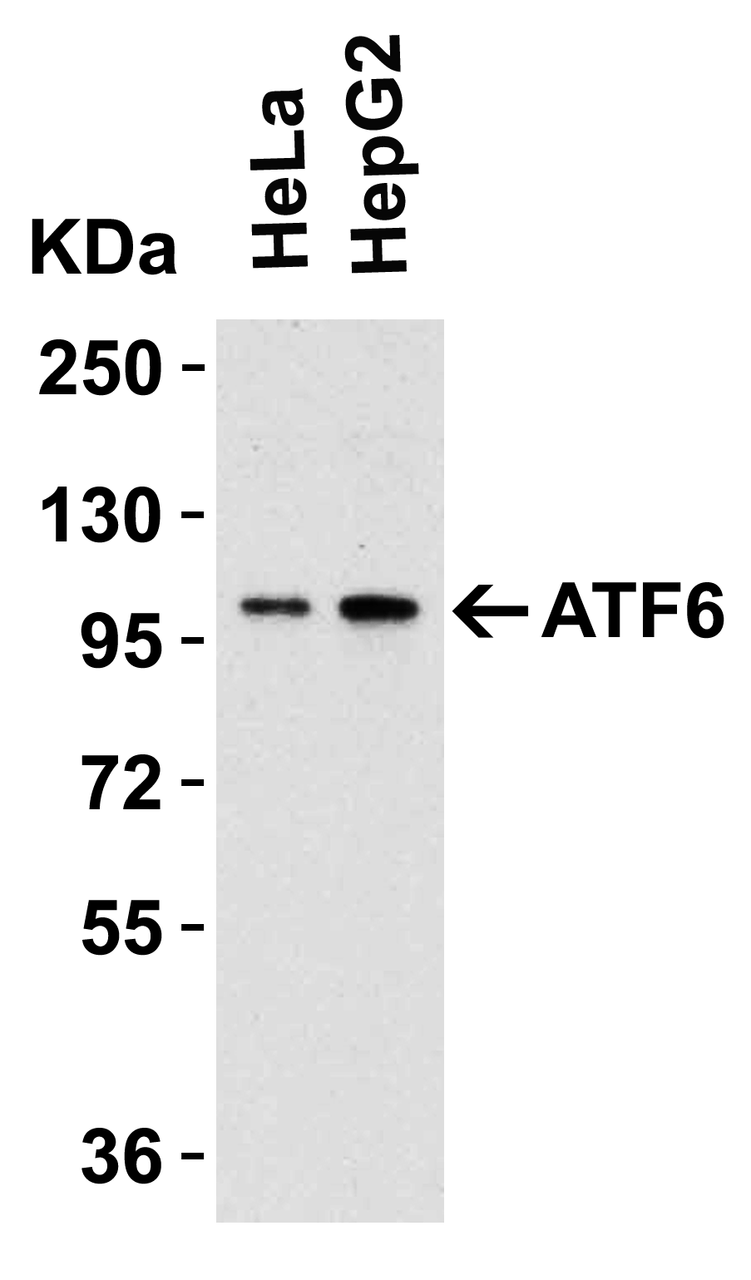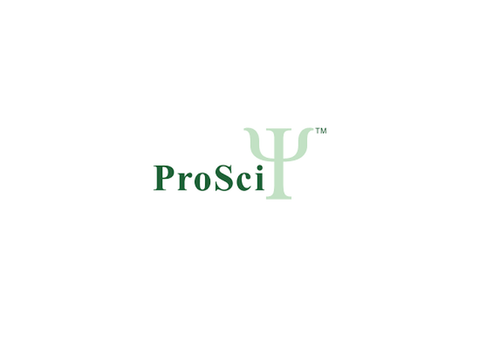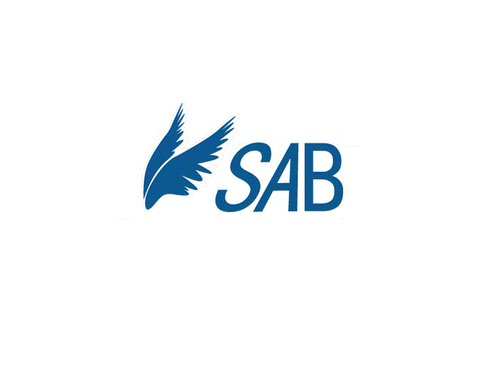Product Description
ATF6 Antibody | 3683 | ProSci
Host: Rabbit
Reactivity: Human, Mouse, Rat
Homology: N/A
Immunogen: ATF6 antibody was raised against a 17 amino acid synthetic peptide from near the amino terminus of human ATF6.
The immunogen is located within amino acids 30 - 80 of ATF6.
Research Area: Signal Transduction, Chemokines & Cytokines
Tested Application: E, WB, IHC, IF
Application: WB: 0.5-1 μg/mL; IHC: 5 μg/mL; IF: 20 μg/mL.
Antibody validated: Western Blot in human, mouse and rat samples; Immunohistochemistry in mouse and rat samples; Immunofluorescence in human samples. All other applications and species not yet tested.
Specificiy: N/A
Positive Control 1: Cat. No. 1201 - HeLa Cell Lysate
Positive Control 2: Cat. No. 1211 – HepG2 Cell Lysate
Positive Control 3: N/A
Positive Control 4: N/A
Positive Control 5: N/A
Positive Control 6: N/A
Molecular Weight: N/A
Validation: KO Validation (Figure 1) : Anti-ATF6 antibodies (3683) specificity was further verified by ATF6 specific knockout. ATF6 signal was not detected in ATF6 knockout HeLa cells as compared to that in control wild type cells.
Isoform: Human ATF6 has one isoform (670aa, 74.6kD) . Mouse ATF6 has one isoform (656aa, 72.7kD) and rat ATF6 also has one isoform (656aa, 72.7kD) . 3683 can detect human, mouse and rat.
Purification: ATF6 Antibody is affinity chromatography purified via peptide column.
Clonality: Polyclonal
Clone: N/A
Isotype: IgG
Conjugate: Unconjugated
Physical State: Liquid
Buffer: ATF6 Antibody is supplied in PBS containing 0.02% sodium azide.
Concentration: 1 mg/mL
Storage Condition: ATF6 antibody can be stored at 4˚C for three months and -20˚C, stable for up to one year. As with all antibodies care should be taken to avoid repeated freeze thaw cycles. Antibodies should not be exposed to prolonged high temperatures.
Alternate Name: ATF6 Antibody: ATF6A, Cyclic AMP-dependent transcription factor ATF-6 alpha, Activating transcription factor 6 alpha, cAMP-dependent transcription factor ATF-6 alpha
User Note: Optimal dilutions for each application to be determined by the researcher.
BACKGROUND: ATF6 Antibody: Disruptions of protein folding and maturation in the endoplasmic reticulum (ER) result in the activation of the unfolded protein response (UPR) , an integrated cellular signaling pathway that transmits information from the ER lumen to the cytoplasm and nucleus. Activating transcription factor 6 (ATF6) as well as the ER-transmembrane protein kinases IRE1p and PERK are the major transducers of the UPR. ATF6 is an ER transmembrane protein that is normally bound to the ER chaperone GRP78, but upon ER stress is released from GRP78 and proteolytically cleaved to yield a cytosolic fragment which then migrates to the nucleus, and together with the transcription factor XBP-1, activates transcription of UPR-responsive genes. ATF6 has two isoforms (ATF6α and ATF6β) ; only ATF6α is recognized by this antibody.
 Euro
Euro
 USD
USD
 British Pound
British Pound
 NULL
NULL

